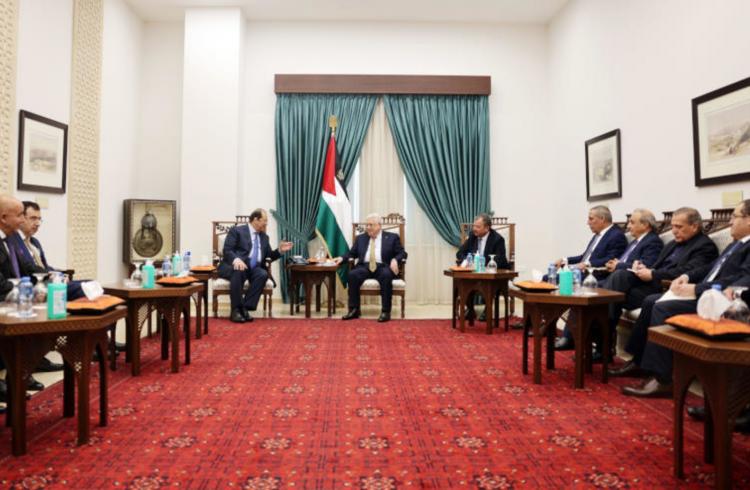Dr. Ahmad Alshaqaqi
Upon the invitation of Mahmoud Abbas, Palestinian factions concluded the course of meetings convened in Egypt following the latest Jenin Battle. As a result of these meetings, some factions have decided not to participate, which is a significant development. Their refusal is due to a variety of factors, including the policy of political arrests of resistance fighters in the occupied West Bank and the absence of a clear agenda for the meeting.
Remarkably, a wide pool of Palestinian political, cultural and media elites have believed that the participation of some forces would not be in their favor. President Mahmoud Abbas thus uses such forums as a representation of a loss of legitimacy as a result of a decline in political presence and action.
The most recent Al-Alamein meeting resulted in a presidential -but not final- statement, reflecting the sense of failure following a long path of internal meetings convened under the title of "internal reconciliation". This title has lost its sparkle as the Palestinian street realized the impossibility of reconciling conflicting agendas into a minimum consensus program, especially as personal interests have taken precedence over national interests.
This reality of frustration and failure is met with glimpses of success and internal glow that have emerged as a result of struggle and resistance in the field. Its details have been evident to everyone and its consequences are tangible and can be measured and built upon within the framework of seeking the Palestinian national redemption path.
The currently escalating resistance in the occupied West Bank, up to this moment, has achieved numerous accomplishments and success, whether at the level of the conflict with the Israeli occupation or even at the domestic level. The losses incurred by the occupation in terms of its soldiers and settlers -from the beginning of the year until now- exceed the rates of previous years by more than two decades. The settlement movement in the West Bank has been exposed to direct threats, prompting the occupation to mobilize large numbers of military units across various regions of the West Bank.
Within the framework of the success the Palestinian resistance factions managed to record, two approaches can be followed:
First: Military formations transcending ideology, which are organized military groups. They reveal themselves in media platforms through which they showcase their performance, whether in the context of deterring aggression, providing combat equipment, or receiving military training.
This reflects the magnitude of determination that has been exerted in the level to which these formations have reached on the ground. Thus, amongst the most prominent conclusions is that these formations went beyond the narrow partisan titles and confrontation with the occupation has become the joint factor between them all.
Second: Limited-element groups that operate as dormant cells preparing militants to carry out unique operations against settlers and the occupation army in the West Bank.
These groups are capable of inflicting great losses on Israelis due to their ability to maintain security secrecy and evade Zionist pursuits. They also possess specialized weapons through which they carry out successful shooting operations.
These two fundamental paths of resistance in the West Bank have withdrawn a significant scene of the Palestinian struggle during the last months. The Israeli occupation security and military establishment has become annoyed by these tactics, and the Netanyahu government has become vulnerable to many internal criticisms, causing it to direct significant threats to the Palestinian resistance in other arenas next to the West Bank.
Such threats, along with the emerging status of resistance in the occupied West Bank, have created a new reality connected to the Palestinian domestic landscape, specifically the path of field unity. This means that the members of the resistance, with their various ideological orientations, whether from Fatah, Hamas, Islamic Jihad, or the PFLP, are now coming together within the framework of the ongoing confrontation in the West Bank.
Therefore, the path of field unity currently taking shape in the West Bank has now become a real model based on a solid land that can be used to achieve true and authentic Palestinian unity, transcending the divisions and internal disputes perpetuated by the Oslo Agreement and the government it produced.
A program of resistance cannot coexist with a program of security coordination and a government that implements and adheres to it. This underscores the fact that reconciling governance and resistance within the context of the ongoing national liberation struggle remains a losing bet that constrains the leadership of the resistance and exposes it to pressure and extortion from the occupation and its collaborators.
The ability to embody field unity in all locations is what can make a true penetration within the Palestinian arena. This may be consistent with the attitudes of our people, who, according to recent polls, believe that armed struggle is the most appropriate way to confront the occupation.





